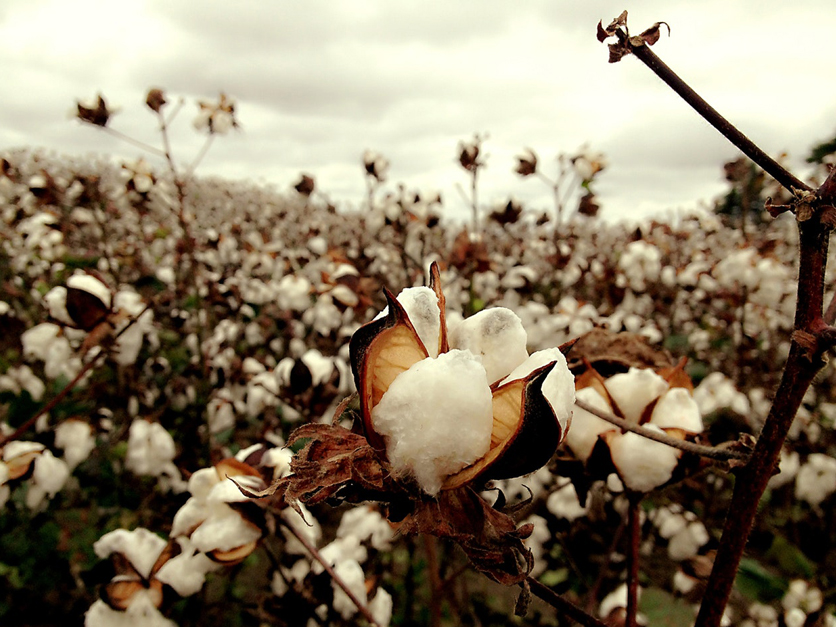Cotton growers are striking back against claims that they're getting better treatment from Washington than other commodities, releasing an analysis that says federal support for the fiber will be lower this year than it was under previous farm programs.
In February, Congress made cotton eligible for the Price Loss Coverage program, starting with the 2018 crop, and cotton producers are also receiving Market Facilitation Payments this year from USDA as compensation for the retaliatory tariffs that China has imposed on U.S. exports.
But the combined PLC and MFP payments will represent only about 7 percent of the cost of producing cotton this year, compared to support levels of more than 15 percent that growers received under the 2002 and 2008 farm bills, according to the analysis by the National Cotton Council. At current price forecasts, the PLC payment for 2018 is estimated to be about $30 an acre.
The report also notes that this year’s cotton crops have been hit by drought in the Southwest as well as hurricanes Florence and Michael in the Southeast. More than half of Georgia’s crop, normally the nation’s second largest, is rated as poor to very poor by USDA as a result of Michael.
Critics say that cotton growers’ demands for still more assistance in the next farm bill, primarily through a provision that would allow Southern Plains growers to increase yield averages that are used to calculate PLC payments, are delaying a final agreement on the legislation.
An analysis issued in September by economists at the University of Illinois and Ohio State University said that cotton growers are already doing better than other farmers because of the actions by Congress and the Trump administration earlier this year.
According to that analysis, cotton growers would receive far more in federal payments on a per-acre basis than producers of corn, soybeans and wheat this year at a time when cotton revenue is projected to be higher than the average for the recent five years.
Meanwhile, the lead Senate Democratic negotiator on the farm bill, Debbie Stabenow of Michigan, has accused House Agriculture Chairman Mike Conaway, R-Texas, of trying to “move hundreds of millions of dollars from the Midwest” to help cotton growers in his state. That was a reference to Conaway's yield update provision in the House version of the bill. The cost would be offset by ending payments to base acreage that hasn't been planted to program commodities for the past decade.
The Illinois-Ohio State economists estimated cotton growers will receive $867 million in total payments this year, including $363 million from PLC and other programs, $277 million in MFP payments and an additional special ginning cost-share assistance that Agriculture Secretary Sonny Perdue approved earlier this year.
The ginning payments were billed as a bridge to help cotton growers until they collect PLC payments for the first time. But NCC argues in its report that the ginning assistance was designed to cover losses incurred in 2016, so the money shouldn’t be counted as support for the 2018 crop.
Perdue said in announcing the ginning payments that they would give cotton growers “one last opportunity for assistance until their farm bill safety net becomes effective,” a reference to PLC. PLC payments for the 2018 crop won’t be made until the fall of 2019.
The National Cotton Council report argues that cotton growers are suffering because of the ongoing trade dispute with China as well as drought and hurricanes.
Even before the damage in Georgia was known from Hurricane Michael, USDA had estimated that 25 percent of the U.S. cotton crop would be abandoned because of the Southwest drought, the report noted.
Seventy-five percent of the U.S. crop is shipped overseas for milling, much of it to China, and the Trump administration’s trade war with China has disrupted that market, the NCC report says.
China was expected to buy 3 million bales from this year’s U.S. crop. Through September, Chinese textile mills had accounted for only 1.9 million bales of commitments and even that amount is in doubt, the report says.
“A key question hanging over the market is the ultimate fate of the remaining 1.9 million bales of sales currently on the books to Chinese mills. With the 25 percent tariff in place, more cancellations and destination changes are expected,” the report says.
The report didn't directly address the negotiations over the farm bill but said that PLC yield averages for Southwest growers were depressed because of droughts from 2008 to 2012. As a result, the report said, these cotton growers didn't benefit from a provision in the 2014 farm bill that allowed farmers to update the yields used for calculating program payments.
The report doesn't address the amount of crop insurance indemnities that cotton growers may receive this year due to the weather-related losses.
For more news, go to: www.Agri-Pulse.com.



